For those visiting or living in Florence, only a short time is left to experience one of the most unique and wonderful exhibits for those interested in either the art of wax modeling or the science of medical-surgical pathology practiced in the 1800s.
The free exhibit, called Oltre il Corpo, L’uomo (Besides the Body, the Man), will end February 12, 2011.
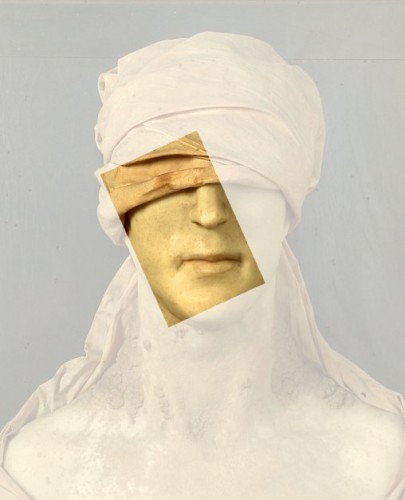
Fans of the anatomical wax collection of the La Specola Museum, who want to take the experience up a notch must go immediately to the newly constructed entrance (one of the few successful modern pieces of architecture in Florence) of the Careggi Hospital and then, find the permanent Center of Knowledge and Art (Osservatorio dei Saperi e delle Arte) exhibit space (to the left of the main entrance hall).
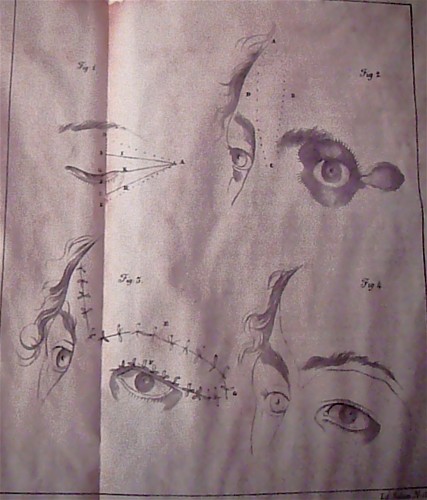
Whereas the anatomical wax models at Museo La Specola show the body in its perfect and healthy state, the creations at the Pathology Museum, from which curator Elisabetta Susani selected prime examples for Oltre il Corpo, L’uomo, are sometimes shocking representations of diseases that were treated in the 1800s. One of the most interesting is a the wax model side by side with the skeleton of a child with an incurable case of hydrocephalus.
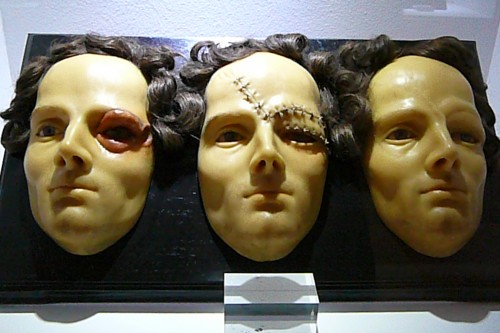
Look more closely and you find that the disease and the treatment are surprisingly modern. An example of this is a patient with ectropion (congenital or cancerous turning out of both upper and lower eyelids) who was treated with a surgical technique similar to one found today. The exhibit shows both the wax model of the diseased state and the surgical intervention, as well as the published illustration of the procedure.
If you are 3,000 miles away from Florence, you can see a video tour of the exhibit.
The Pathology Museum of Florence
The Pathology Museum was created in 1824 at the hospital of Santa Maria Nuova, built in 1288 by the father of Dante’s muse Beatrice. It wasn’t until 1742 when there was a move to create a medical academy to formalize the sharing of information among doctors and scientists.
It took another eighty years to establish the Florentine Medical-Physical Society. One of the first acts of the Society was to set up a Pathological Museum. It was not a museum for the public, but rather a repository for information about the pathology and medical-surgical treatment of diseases.
Regulations for conducting autopsies in the Hospital of Santa Maria Nuova were established. Each autopsy was to be presided over by the director of the Pathological Museum. The deceased patient’s clinical history was put on file. The diagnosis made by the patient’s doctor was to be compared with the results of the autopsy. The organs, removed by surgical procedures were consigned to the Museum. In cases where patients were cured, their doctors were required to send the Museum a report on their post-operative care.
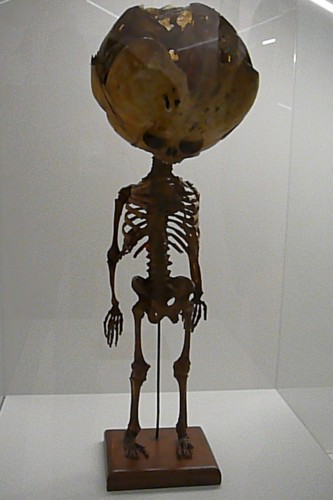
Due to the difficulty of ensuring correct conservation of the pathological materials, it was decided to have some duplicates fabricated in wax. The Museum’s model-makers studied the techniques practiced in the other wax-modeling laboratory in Florence, La Specola.
Surprisingly realistic models were fabricated, providing a fascinating glimpse of the major pathologies in the 19th century. The collection of anatomical wax figures includes numerous wax reproductions, mainly the work of Giuseppe Ricci, Luigi Calamai and Egisto Tortori.
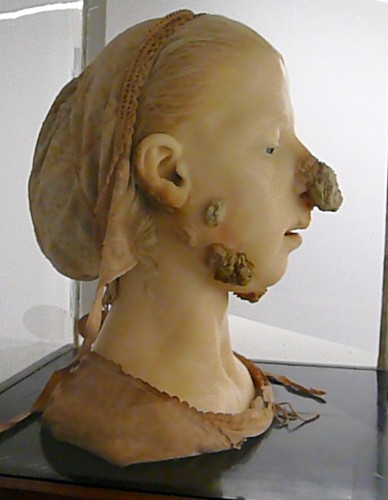
A remarkable example of symbiosis between science and art, the wax models were important, above all, for their value in teaching, allowing professors to illustrate the most important diseases to future physicians without having to depend the dissection of cadavers or the preservation of diseased organs.
The Museum attracted illustrious researchers in European medicine and resulted in the creation of one of the first Departments of Pathology in Europe, sited at the Hospital of Santa Maria Nuova.
The Institute of Pathological Anatomy and the Museum were moved to Careggi Hospital in 1959. At present, the Department of Human Pathology and Oncology, instituted in 2000, manages the Museum’s collections.
Osservatorio dei Saperi e delle Arti (OSA)
Address: Largo Brambilla 3, New Entrance of Careggi Hospital. Take the #14 ATAF city bus to the stop half a block within sight of the Careggi Hospital entrance.
Open: Monday – Friday 10am – 5pm, Saturday 10am – 1pm (Free). Ends: February 12, 2011.
